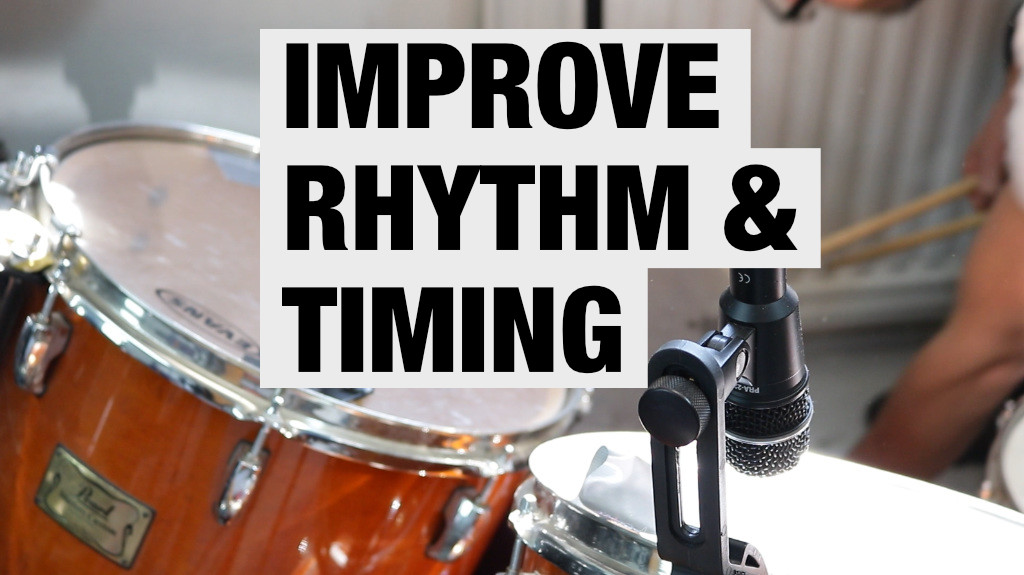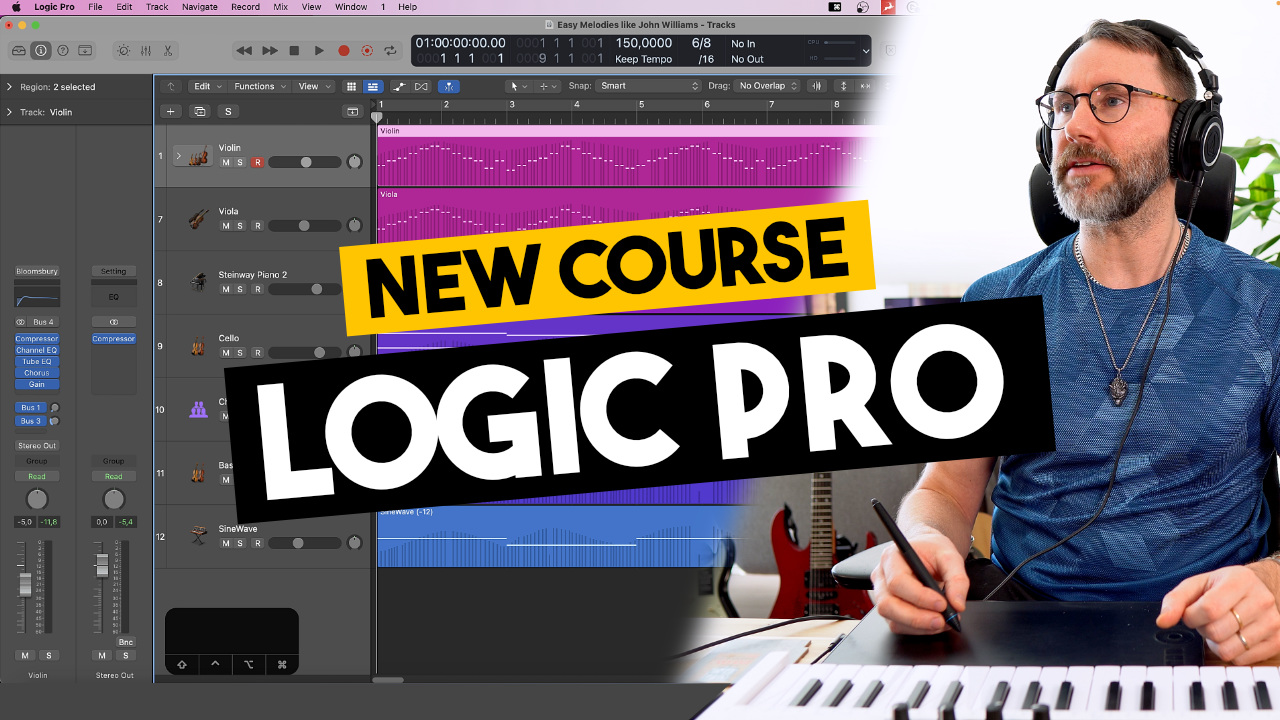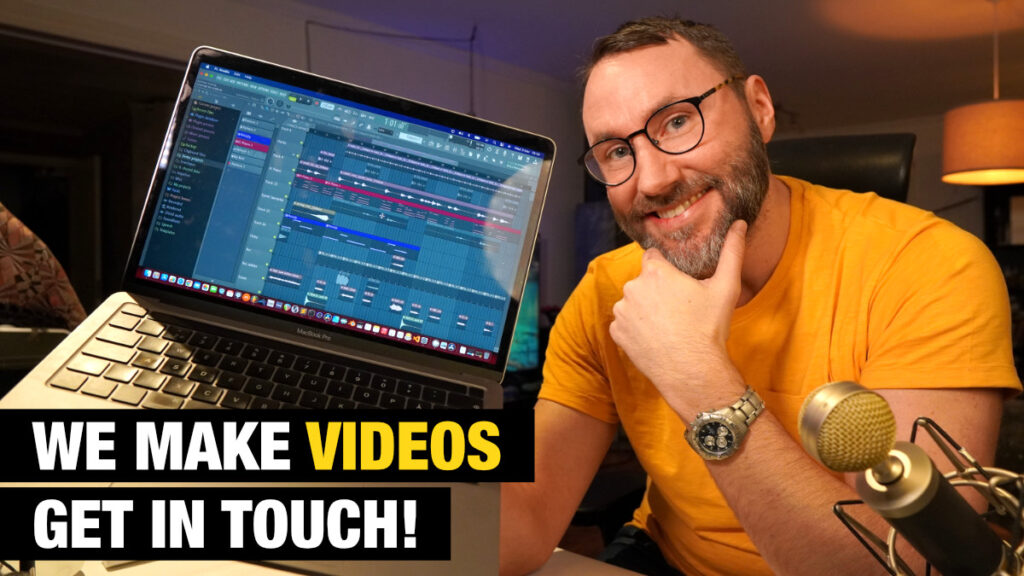If you have a hard time playing in time there are several exercises and techniques you can use to improve your timing. These rhythm timing exercises are relevant to any kind of musician or producer. Playing any kind of instrument. Be it finger drumming on the latest Maschine+, MPC or the upright piano.
My name is Mattias and I’ve played drums on several albums since age 14 (born 1978). I’ve consulted many drummers in the studio while recording their bands, and thought I should share my favourite rhythm timing exercises.
If you have a hard time playing in time you need to know these tricks.
My favourite Rhythm Timing Exercise to nail a solid performance
While playing a simple 4/4 beat. Count the beat subdivisions (eight notes) in your head as you play. This is especially good if you are playing / practising at a slower tempo. As you will “feel” the flow of the rhythm better than if you just count the 4/4 in your head. If you feel the subdivisions you will be more accurate in your playing too.
I’ve seen this work for several drummers who were playing all over the place (off beat). This is relevant for piano playing, guitar playing and finger drumming too obviously. 😉
5 Techniques for Improving Your Rhythm and Timing
We’re going to look at four techniques you can start using today to improve your sense of rhythm and timing when you play music. Try to incorporate one or more into your regular practice immediately and then add the others over time.
1. Start with a Slow Tempo
As a novice musician it’s really good practise to start playing at a slower tempo. It’s much harder to keep an accurate tempo and timing if you are playing at higher speeds (BPM values). Importantly, tap your foot to the song tempo / metronome.
2. Practise against a Metronome or Recording
While practising rhythm and timing it’s crucial you play to a metronome of some sort. Playing against your favourite song is of course also good. That is, if the song has a solid tempo. Most top chart songs of today contains programmed beats so it’s probably gonna be super accurate timing anyways.
When doing these rhythm timing exercises I think it also helps to tap the tempo with your foot as you are playing.
3. Beat Dividing for a more Accurate Rhythm Timing Performance
When practising you count the beats in your head to maintain the tempo of the song. If you are playing a 4/4 beat you are probably counting: 1, 2, 3, 4 per bar. Like the metronome ticks (counts) in your DAW.

Now divide that beat into smaller subdivisions than the original tempo suggest: 1, 2, 3, 4, 5, 6, 7 ,8.

Some people like to count something like 1, and, 2, and, 3, and, 4, and…
But I prefer to count 1, 2, 3, 4, 5, 6, 7, 8. Personal preferences. 😉
Counting the sub-divisions in your head like this will help you maintain a solid tempo even at slower tempo. You can select any of the counting methods, as long as you are counting in subdivisions rather than the original tempo.
Also, it’s helpful to accent the regular 1, 2, 3, 4. Experiment and see what makes you play more accurately against the tempo.
4. Practice rhythm and timing on different instruments
If your main instrument is drums (…or finger drumming on that shiny Maschine+). Try switching to another instrument and get a feel for the rhythm and timing on say, a keyboard. Playing the keyboard is not that different than playing drums in the sense that you are doing different things with both hands and your foot / feet (yeah, I’m talking about that sustain pedal).
Well, of course it’s different. On the piano you have to play rhythm with your fingers, so it’s different. Furthermore, playing on a keyboard or guitar will make you play the melody. Which might feature more complex and detailed rhythms.
It’s good practise to switch instruments from time to time to get perspective on the rhythm of your song.
If you are playing Meshuggah songs on drums you are already doing complex rhythms so don’t worry. 😉
Despite these differences, rhythm and timing skills are shared across instruments. When you improve the rhythm and timing on one instrument you will find it much easier to play complex rhythms on another instrument.
In conclusion your overall ability to read rhythms and perform them grows as you practise rhythm timing on any instruments.
5. Learn to Identify Different Time Signatures
By far the most common time signature you’ll come across, especially as a new student, is 4/4. But of course there are many other more exotic time signatures around. There’s also 2/4, 3/4, 6/8, 7/8, 12/8, and many more. Most popular music is fairly simple, and conforms to the basic 4/4 time signature, but many do not.
One easily recognizable example of an odd time signature is the Mission: Impossible theme song. Using a classic Latin groove, the theme is played in 5/4.
Progressive metal and rock music is no stranger to unusual time signatures either. Just listen to the work of Dream Theater or Yes and you will know what I mean.
Meshuggah, the pioneers of progressive metal even gave birth to a brand new subgenre, called Djent Metal. Listen to this song and tap the beat. 😉 Isn’t that a great rhythm and timing exercise?
In conclusion listening and playing odd time signatures will help you grow a better rhythmic understanding. Now go ahead listening to some songs with odd time signatures. Try to count the beats and figure out their unique time signature.
Summary
Rhythm and timing is probably the most important aspect of music. The rhythm and beat is the foundation of any song. It comes before any note or melody is introduced.
If you play out of time and off-beat your band mates are gonna get confused. So practise to a steady beat regularly and often and your timing will improve. As mentioned I highly suggest counting the beat sub-divided to help you stay at a steady tempo and timing in your music performance.
Hope you found this article helpful in your musical journey!
Thanks!
















